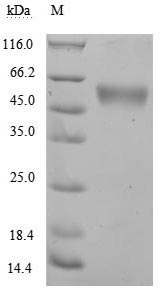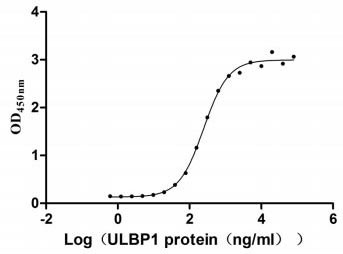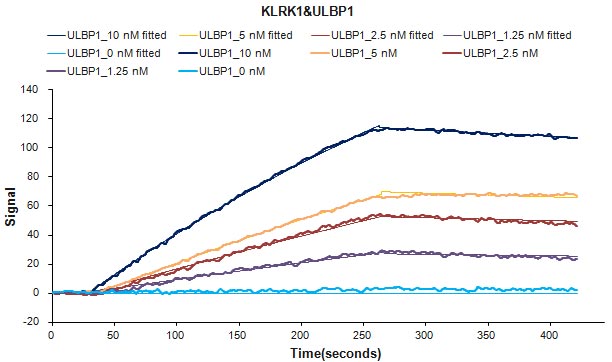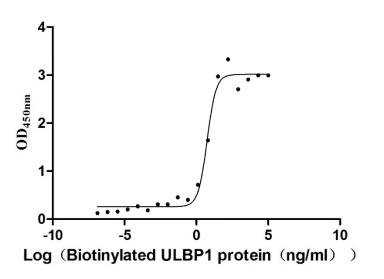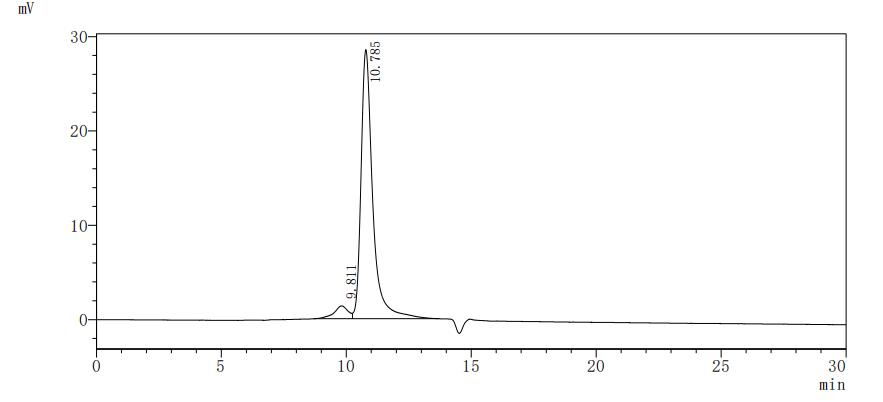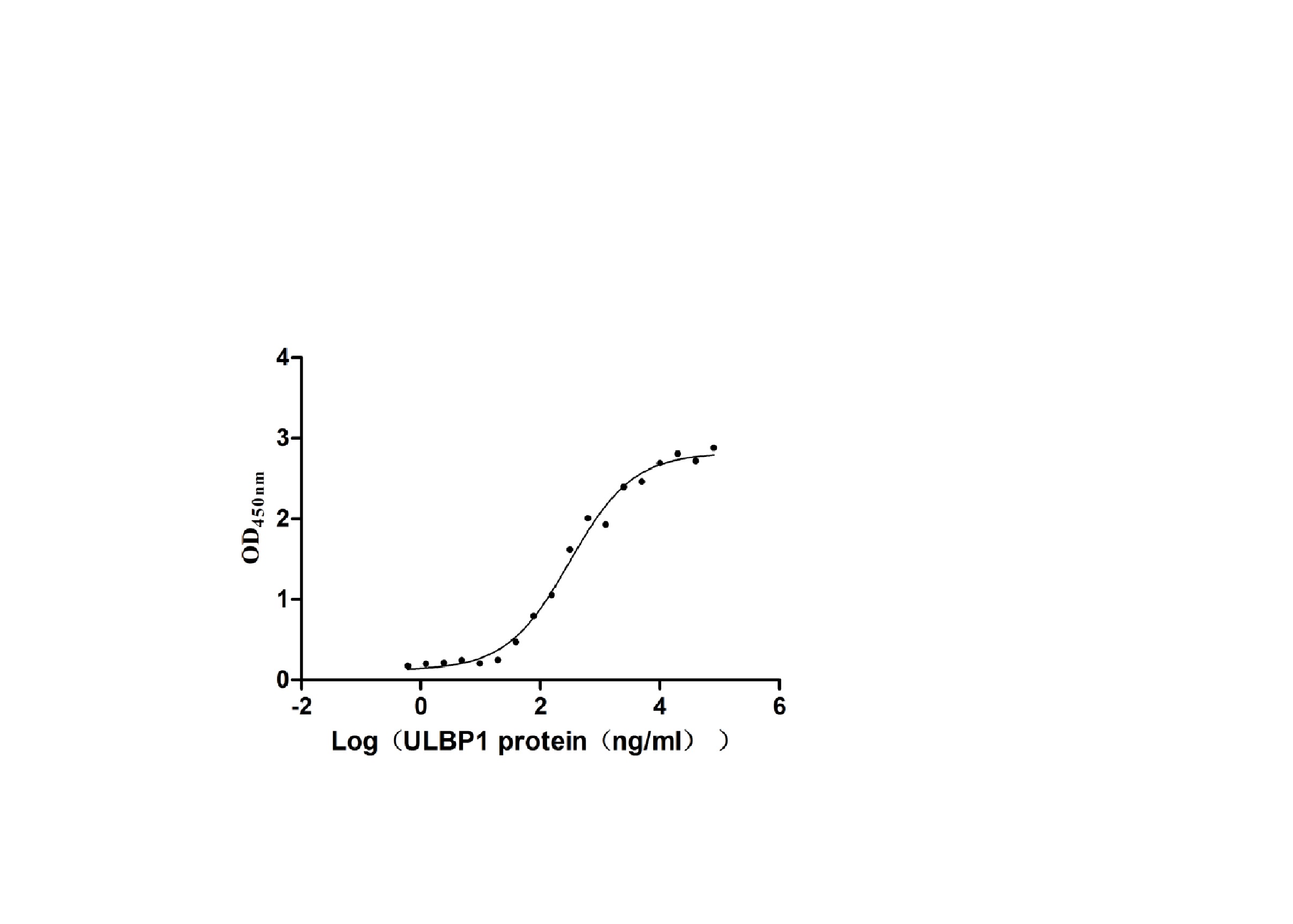The human NKG2-D type II integral membrane protein or KLRK1 is a costimulatory receptor expressed in Natural Killers and CD8+ T-cells. KLRK1 participates in the immunosurveillance of tumor and virus-infected cells and mediates the activation of T-cell receptors in CD8+cells, causing the amplification of the T-cell-mediated adaptative immune response. This target protein KLRK1 also modulates natural immunity by activating the NK cell cytotoxic activity. It’s activated by the interaction of stress-induced ligands presented on the surface by the MHC class I binding proteins. This recombinant product is the 78-216aa region of the KLRK1 protein, which is expressed in mammalian cells and fused on the C-terminus with an Fc tag. It has a final molecular weight of 43.6 kDa. This product has a purity higher than 90%, as measure by SDS-PAGE. The affinity constant of this protein against ULBP1 was 2.27 nM as detected by LSPR, and the EC50 was 222.4-276.0 ng/ml, as determined by ELISA binding assay. The protein can be used in immunity modulation and immunosuppression studies on cancer and viral diseases. The final product has low levels of endotoxin, with less than 1.0 EU/µg as determined by the LAL method.


